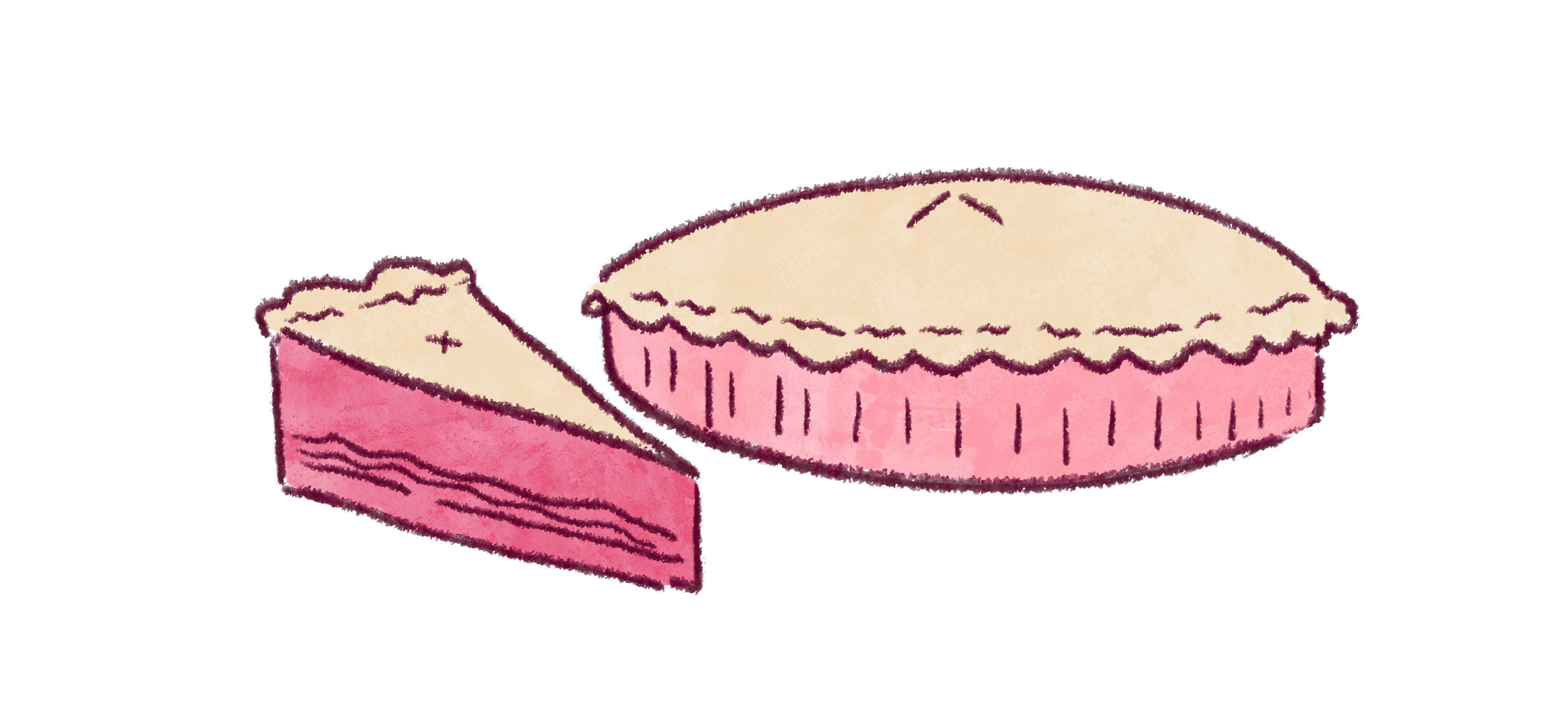Words by Ariel Tozman
Visuals by Saif-Ullah Khan
Falling asleep at her desk with a pencil in hand, tension creeps steadily up her body. Undergraduate student Sarah Glynwilliams sits debilitated by an overpowering sense of academic deadline doom. She knows she is tired and will wake up, hours later, with her face in her notebook. Yet, time and time again she pushes through it. Exhausted, stressed out and unfocused—so long as she gets the work done, it doesn’t matter.
Glynwilliams spent two years in the mathematics and its applications program at Toronto Metropolitan University (TMU) and a year studying architectural science before taking a year off.
She describes her year off as “one of the best decisions” she made. On top of dealing with “a lot of anxiety,” academic pressure left Glynwilliams feeling like she didn’t have time for herself.
Now in her third year of biomedical sciences, she’s passionate about what she’s learning and happier than she’s ever been.
“I actually really struggled with it in the beginning. I always put school first, I never really put myself first,” says Glynwilliams.
She is now making a conscious effort to prioritize her well-being. She sets time aside to pursue the hobbies she enjoys—reading a book, solving a sudoku puzzle or simply sitting in front of the TV.
A key part of Glynwilliams’ self-care journey has been getting eight hours of sleep a night, which she “never did before.”
Struggling to incorporate self-care into her routine took a toll on Glynwilliams’ mental health. Trailing blindly after a seemingly endless string of deadlines caused her to lose sight of the bigger picture—the work was not only endless but seemed pointless because she lost faith in what she was working towards.
Sacrificing precious hours of rest left her trapped in a constant state of stress.
“I’m recovering from that right now,” she says.
The World Health Organization (WHO) defines self-care as “the ability of individuals, families and communities to promote health, prevent disease, maintain health and cope with illness and disability with or without the support of a health worker.”
Yet, due to the drastic tension between student life and self-care, many students conceptualize the term differently.
For some, ‘self-care’ could conjure images of sheet masks, blow-outs and mani-pedis. Beauty and wellness magazines like Vogue, Cosmopolitan and Elle highlight the identification of self-care with consumption practices, especially aesthetic ones, according to a 2021 analysis in the journal Feminist Media Studies. This relates to the financialization and indebtedness of everyday life, disguising self-care as economically inaccessible. The authors also suggest the magazines hyper-feminize self-care, which could potentially alienate non-female-identifying students.
A study in the National Library of Health came to a similar conclusion. Utilizing data gathered from social work students, they found individuals who are engaged in self-care are more likely to be white and have higher socioeconomic professional statuses and privileges. This further highlights accessibility as an issue relating to various conceptualizations of self-care.
Jodi Lofchy, a psychiatrist at St. Joseph’s Health Centre in Toronto, underscores the importance of access when it comes to self-care. She says she works with youth “all the time” to help them prioritize their mental and physical health while balancing academic course loads and other responsibilities.
For Lofchy, self-care is about structuring one’s time to accommodate health-promoting aspects, “which is sleep, which is exercise, which is eating.” She says these practices may seem “really basic” but establishing a healthy routine can be especially hard for students. Fitting regular workouts, meals and bedtimes into weekly classes at irregular intervals can be tricky, she says.
Lofchy says setting consistent sleep and wake-up times can reduce stress and enhance cognition.
An article published in AIMS Neuroscience suggests sleep is “essential to our ability to cope with emotional stress in everyday life.” The inability to regulate stress can result in sleep disturbances. Another study published in the National Library of Health explains how sleep deprivation induces “adverse changes in cognitive performance,” affecting one’s abilities.
“Some people have these weird reverse sleep schedules where they are sleeping until noon and then they’re working on stuff until 1 a.m., 3 a.m. in the morning…and that’s incredibly unhealthy,” says Lofchy.
According to Lofchy—while students may treat self-care as an afterthought—the more consistency and structure, the better the body and mind react.
Confronting barriers to access when it comes to self-care involves identifying universal practices—like sleeping, eating and exercising—that discredit hyper-feminized or consumer-focused images. Lofchy says relating healthy habits to academic success also challenges the idea that self-care and productivity are necessarily opposed.

Coming and going from first-year lecture halls packed with fresh-faced engineering students, Ammar Ali’s world was smaller than one might think. A then-first-year computer engineering student, Ali’s planet encompasses several city blocks and thousands of rosy faces but makes room for only two: himself and his school work.
When Ali wondered about stretching his world to fit another person, he reminded himself that he was the only thing his schoolwork needed. Expanding would distract him from the only goal that matters: getting through his program.
Two years pass before this ‘perfect’ system is corrupted by loneliness. Rather than assume agency over his life, he was living in “a procedure that someone else put out in front of [him].”
“I’m spending all my time on my program or assignments…it’s not adding to what makes me,” he says.
Ali’s singular focus on school gave him tunnel vision, causing him to feel disconnected from himself and the world around him. By opening himself up to social connection opportunities, Ali began to realize the value of self-care.
Semester after semester, directing 100 per cent of his energy into school damaged his self-esteem and made him feel incredibly lonely. Once he acknowledged this feeling, he opened himself up to connecting with other people.
Now in his fourth year, Ali says “shifting away from the schedule” and “taking a little bit of time away from work” helps him remember who he truly is.
Self-care can seem like a luxury when you’re under intense academic pressure. Yet “if you’re not feeling your best, your work’s not gonna be at its best,” he says.
While he agrees self-care may conjure images of “the classic cream on the face, cucumbers on the eyes,” Ali says it’s really just about “giving time to yourself.”
As more college students face challenges managing stress and other mental health concerns, evidence-based studies such as one conducted in the International Journal of Environmental Research and Public Health emphasize the importance of developing low-barrier self-care strategies.
Using data collected from college students in Beijing, the results of the study Making Joy Pie highlight practices to mitigate academic stress.
The study proposes five interventions, or “slices of pie”: delaying worries (setting a time to worry later, if necessary), initiating communication with others, being less critical of yourself, developing self-care tactics and engaging in self-care regularly.
Some of the strategies developed by students were jogging, listening to music, chatting with a friend and playing with a pet.
Findings from the study demonstrate how conceptions of self-care rely on self-actualization and personal coping strategies. Individual self-care tactics are varied and “can be easily administered by users at their own pace and in an environment where they feel relaxed.”
Making Joy Pie also emphasizes the significance of accessing safe environments, sometimes referred to as “third spaces.”
American sociologist Ray Oldenburg coined the term in 1989 to identify places where individuals voluntarily access to foster connection—whether with other individuals or specific communities.
Third spaces are meant to be accessible to everyone and have more than one use, such as bars, coffee shops and general stores.
Oldenburg wrote about “great, good places” in the context of third places vanishing. An article in the Journal of Health & Place describes how third places serve a crucial role in providing socialization, care and support outside of home and school—yet their relevance to public health is under-researched and understated.
According to an article in the McGill International Review, third places are disappearing, especially in cities. These spaces are critical as they allow people to step away from expectations of productivity—yet rising costs are putting bars and coffee shops out of reach for people in lower income brackets such as many students.
Physical community spaces are declining as people spend more time alone with their screens, meaning online communities “have moved to fill the desire for a sense of community and belonging.” Shopping and outlet malls are “closing, left vacant or struggling to survive” and “the pandemic caused the closure of one in seven small businesses across Canada,” all according to the McGill International Review article.

Immersing himself in Toronto’s metropolitan underground, Ali rambles through a subterranean network of neon shop signs, cafes, barber shops and convenience stores alongside hurried men and women in suits. It is perhaps an odd setting to decompress—yet Ali finds a moment of calmness within the hustle and bustle to reorient.
Whether it’s a person, a group of people or a specific place, Ali believes third spaces can function as “checkpoints” in life to reassess priorities and evaluate one’s personal relationship.
“If I need to clear my mind or take time by myself, I put on some headphones, I listen to some music and I walk 30 minutes from [campus] straight to Union Station using the PATH,” he says.
He says self-care should involve structuring your time around what makes you feel good.
“I think just that mindset and that environment that you’re surrounding yourself in, that’s really important because then you naturally try to keep up with the people around you,” says Ali. “And I think it’s not you forcing yourself in that direction. It’s rather the environment that’s kind of encouraging you to accomplish things that you otherwise wouldn’t feel the need to accomplish.”

It’s the winter 2023 semester at TMU and first-year psychology student Selena Vega can’t get out of bed. Sapped of strength, a sweeping sensation of numbness seizes her. Exhausted and trapped in an unyielding nothingness, she loses interest in her favourite pastimes like dancing and going out with her friends.
“It was really hard for me to even get out of bed by second semester that first year…even my own personal pastimes, I just lost interest for because I just felt so numb, kind of like all my energy was just drained from me,” says Vega.
If she pokes her head out of the covers long enough to brave the snowy commute from Newmarket, Ont. to school, she walks into class the same way she’d left her duvet—in her pyjamas.
“You don’t want to go to your class. You don’t, you just want to sleep or hibernate,” she says.
Between being thrown headfirst into three-hour courses and the growing uncertainty about life due to continuous changes after the height of the COVID-19 pandemic, she feels overwhelmed by the transition from high school to university.
Temperatures drop as Vega begins to spend more time at home, frantically attempting to memorize 70 slides of content. Ice, sludge and readings pile up at her feet.
Despite sleeping for eight hours or more each day/night, Vega feels so tense and edgy that she cancels plans and returns to her safe space—bed.
In May 2019, WHO officially recognized burnout as an occupational disease.
WHO conceptualizes burnout as a syndrome resulting from “chronic workplace stress that has not been successfully managed.” The condition is characterized by feelings of energy depletion or exhaustion, increased mental distance from one’s occupation and/or feelings of negativity and reduced efficacy.
In the context of alarming mental health trends, calls to analyze the causes and consequences of burnout within post-secondary institutions are growing. A national survey of Canadian students using campus mental health services conducted by BMC Public Health reported that 95 per cent of participants felt overwhelmed and exhausted, 86 per cent experienced depression, nearly 84 per cent experienced anxiety and 81 per cent experienced loneliness.
A literature review in the online journal Healthcare concludes burnout is becoming more frequent among university students and chances of experiencing it increase as academic years progress. Given the negative impact of stress on students’ cognition, learning and empathy, promoting healthy lifestyle habits is key to mitigating risk. The review says more research must be done on the relationship between burnout, life habits, sleep quality and mental health to promote effective interventions.
Healthy lifestyle practices identified in the review include mindfulness, regular physical activity, proper nutrition and the exclusion of “negative habits” such as the consumption of alcohol and stimulant substances.
That winter, Vega pulls out a notebook and begins writing, giving form to the nothingness—where it came from and where she felt she had gone wrong.
Vega logs out of her social media accounts and sets aside time to reflect on the bone-deep tiredness she can’t seem to pull herself out of. Slowly, tasks that seemed impossible before now become necessary to move forward: organizing her room, listening to music and even going for a drive.
“Self-care is really just kind of taking a step back and time to yourself, in a way I have to kind of be selfish,” she says.
Little by little, Vega pops her self-defence bubble. Currently in her third year, she no longer relies on the easy security of a warm bed or addresses academic pressure through inaction. She establishes a newer, healthier routine—one beyond her home or school.
Sometimes, she suggests, you can get out of your funk by physically leaving the space you’re in.
“I was used to sitting in the same position for three hours,” she says. ”You know, like, grab a coffee or something.”

In university, one of the ways students can access third spaces is by joining extracurricular groups.
One study cited in Healthcare’s literature review shows that extracurricular activities—such as sports-related exercise—can act as important forms of stress prevention. Extracurriculars of all kinds enhance students’ well-being by promoting social support.
While extracurriculars are great opportunities to connect with others, barriers such as not knowing where to find groups, anxiety about joining them and personal scheduling conflicts can prevent students from making use of them.
Students may also access third spaces like private gyms and public places like recreation centres, community centres or parks.
Though Lofchy recommends 30 minutes of aerobic exercise three times a week, she acknowledges students operate on “wonky schedules.” Gym memberships and fitness classes can feel pricey and intimidating but a regular low-barrier activity like walking is a great substitute. Lofchy “can’t stress the importance of fresh air and fresh sunlight…it’s just really great to get out the door.”
She also suggests engaging in breathing and meditation exercises, which can help calm racing thoughts and improve sleep quality. Mindfulness apps like Calm, Headspace and Insight Timer are low-barrier ‘do it on your own time’ tools.
Scrolling through Instagram one day, Glynwilliams sees an advertisement for the callisthenics club on a TMU Instagram page. She’d always wanted to get into callisthenics but never knew how.
She figures she can take better care of her physical health, though deadlines and nerves have dissuaded her from joining an extracurricular in the past.
It turns out the club is “actually really fun,” says Glynwilliams. Callisthenics sessions motivate her to work out and socialize.
“It’s really good to have other people to talk to and especially because they’re students, you can relate to them.”
For most of her TMU career, she has prioritized school at the expense of her physical and mental health. She undertook two programs before taking time off to re-examine her priorities and realizing what she needed was a healthier work-life balance.
Glynwilliams advises others in her shoes to start with half an hour dedicated to self-care, “minimum half an hour, and then just kind of start figuring things out from there.” Once Glynwilliams began prioritizing her well-being, her stress levels reduced drastically. Now, she finds time for school, for exercise, for sudoku puzzles and for a part-time job—a balance she never thought she’d find.
“School’s there, like you want to get good grades and everything,” she says, but “your own mental health is what’s going to be most important in the end.”











Leave a Reply